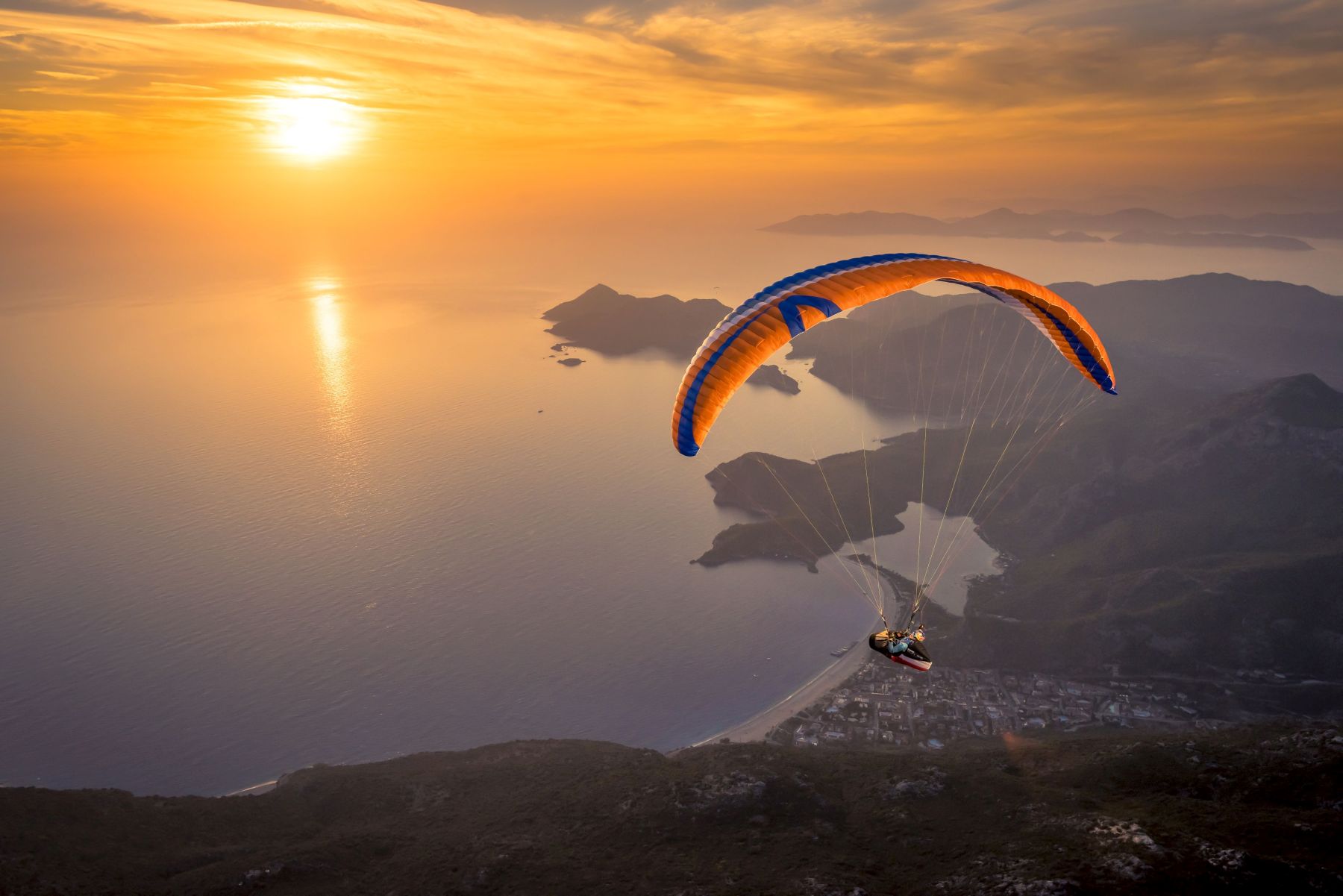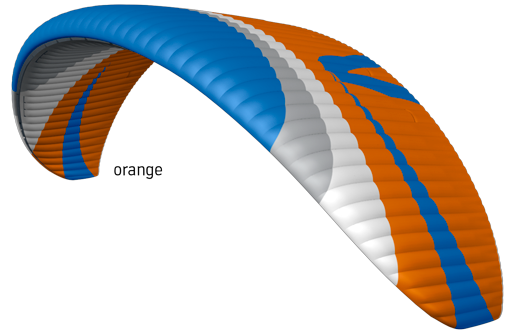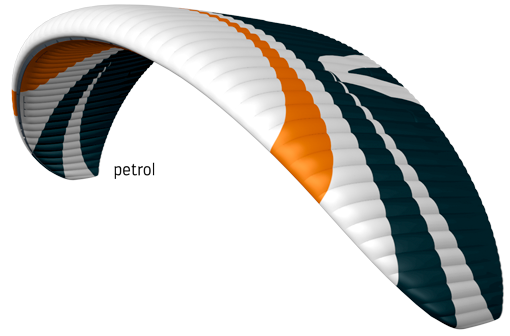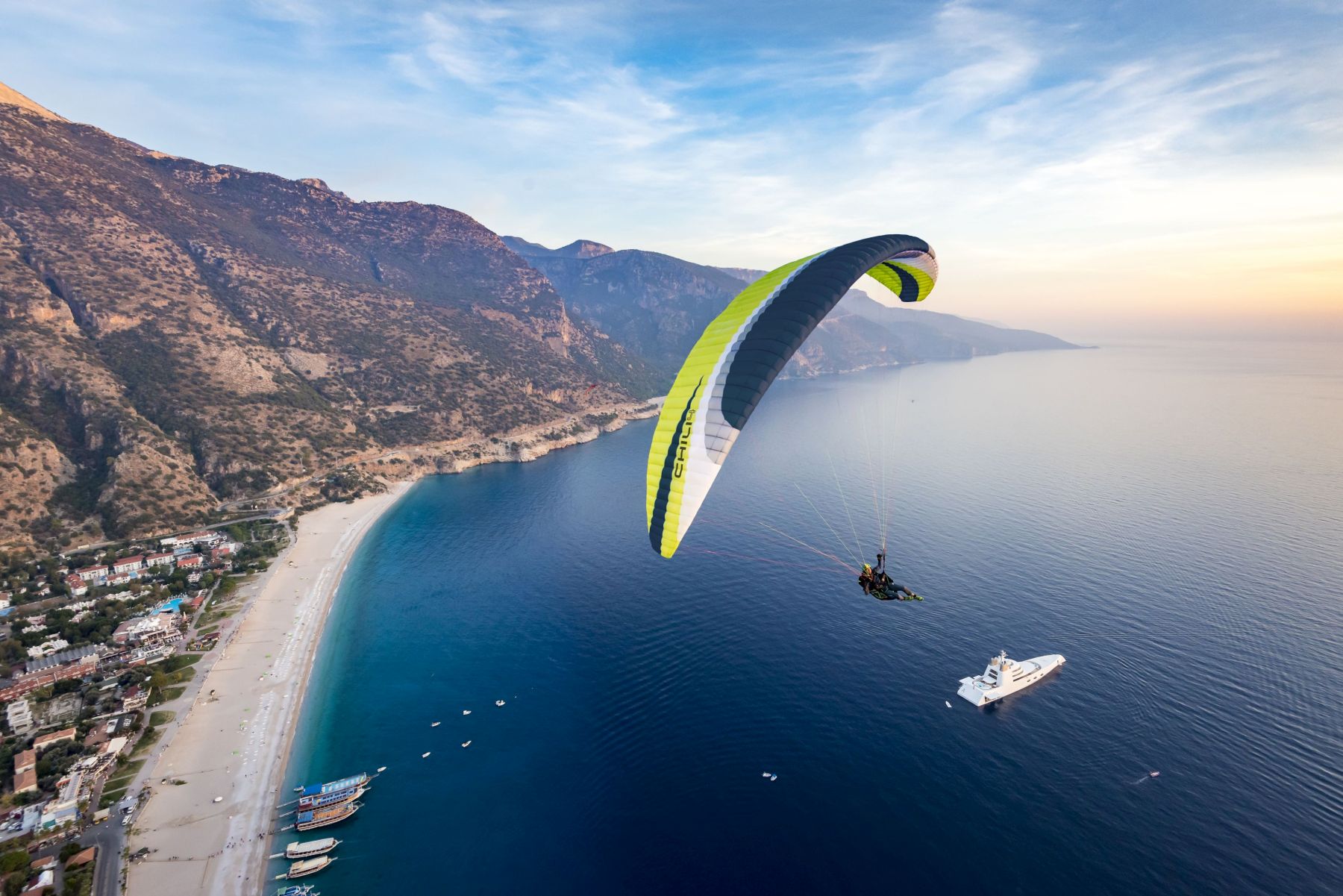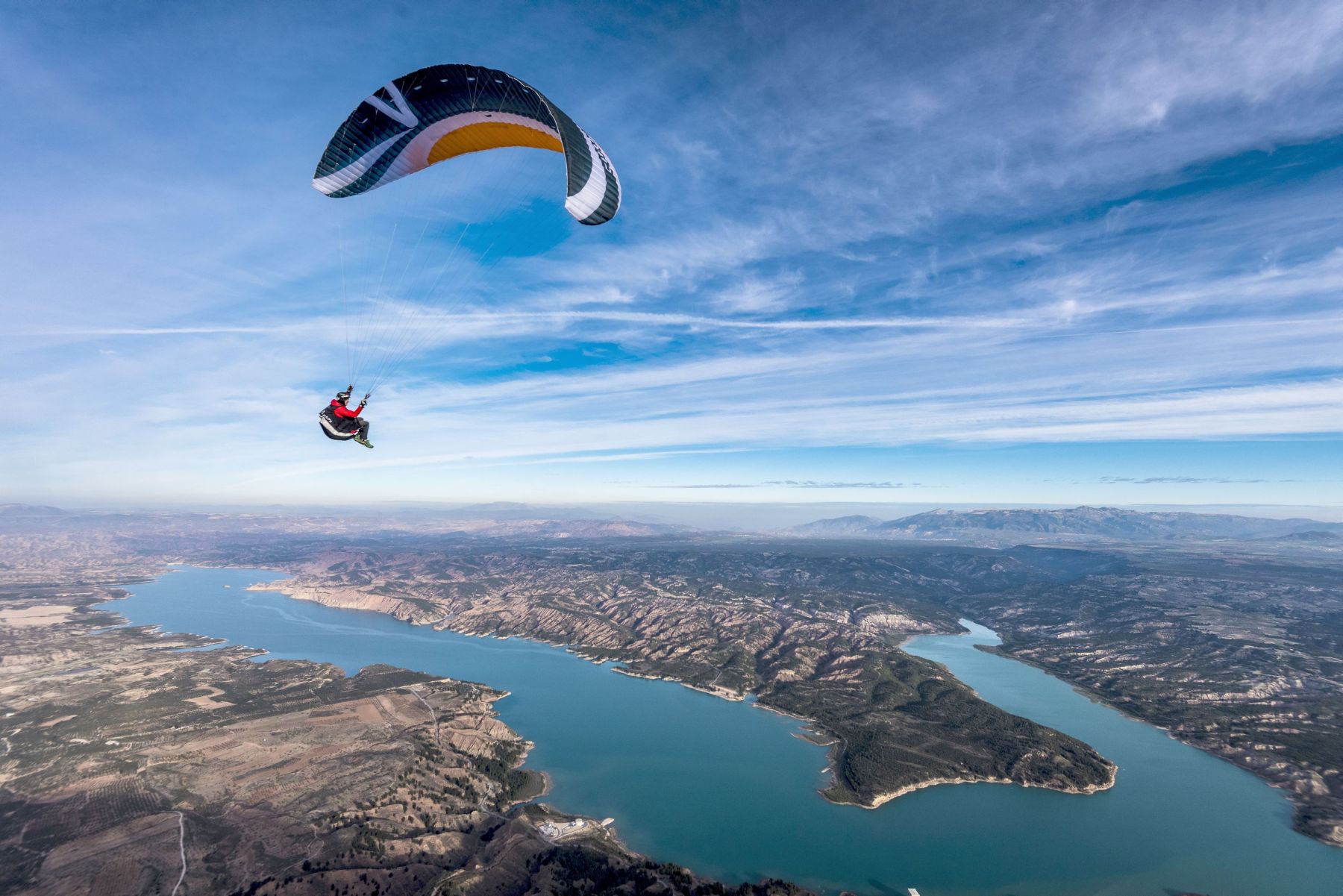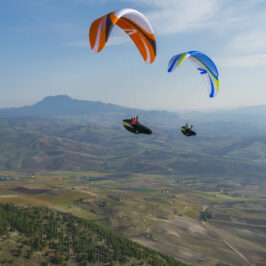HOW DOES THE CHILI FLY?
Before we put pencil to paper, we spent a lot of time talking to the CHILI community. We asked thermal flyers, XC specialists, expert pilots, and our importers and dealers what they would like to see in the CHILI4. Their feedback became our mission:
The CHILI4 gives its pilots more precise feedback and can be steered more intuitively throughout the whole spectrum of its brake line travel than its predecessor, the CHILI3. Control line movement lies in ergonomically perfect space and the brake lines kick in promptly after a carefully selected delay. Brake travel and pressure are optimized to meet the requirements of thermal and XC pilots who love to spend hours exploring their favorite line. That’s why effective brake travel is a little shorter and the brake pressure a little higher than with the glider’s successful predecessor. The result is direct, precise and effortless handling.
A new canopy concept with a slightly higher cell count, decent shark nose and more attention to details in the cell construction and sail tension ensure constant internal pressure along the entire angle of attack area. The result is a glider that flies like on rails, even in turbulence conditions. We improved not only the glider’s performance along the entire polar curve – from off-bar cruising mode to near comp wing high speed gliding – but also its stability in hands-off flying. The CHILI4 converts every updraft into altitude gain without rearing up in turbulence. This makes it even easier to core thermals than with its predecessor, making the CH4 the new the “climbing king” of the EN-B class.
To sum it up: We think CHILI pilots will love the “new one”. And the rest of the crowd will follow suit after the first test flight.
